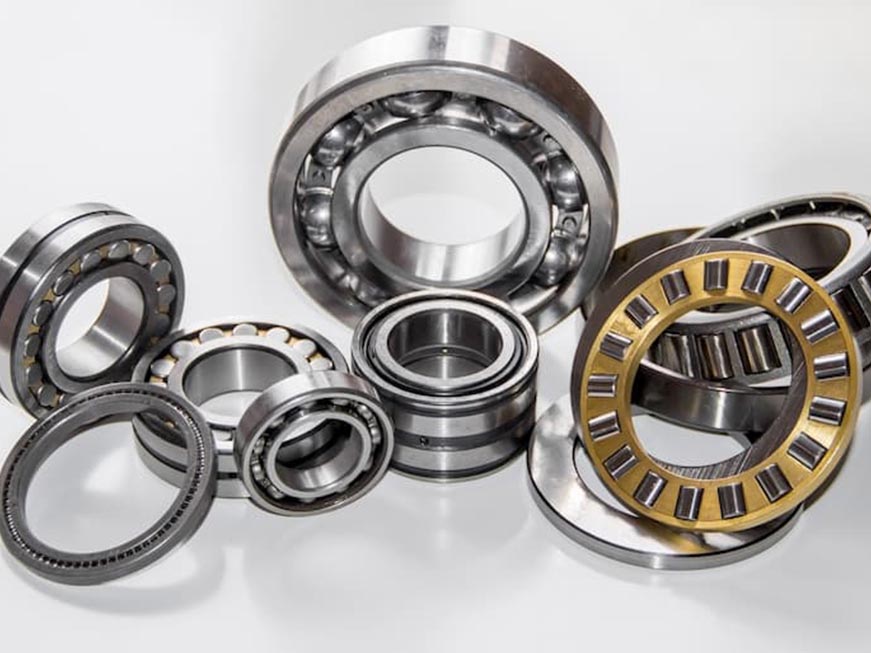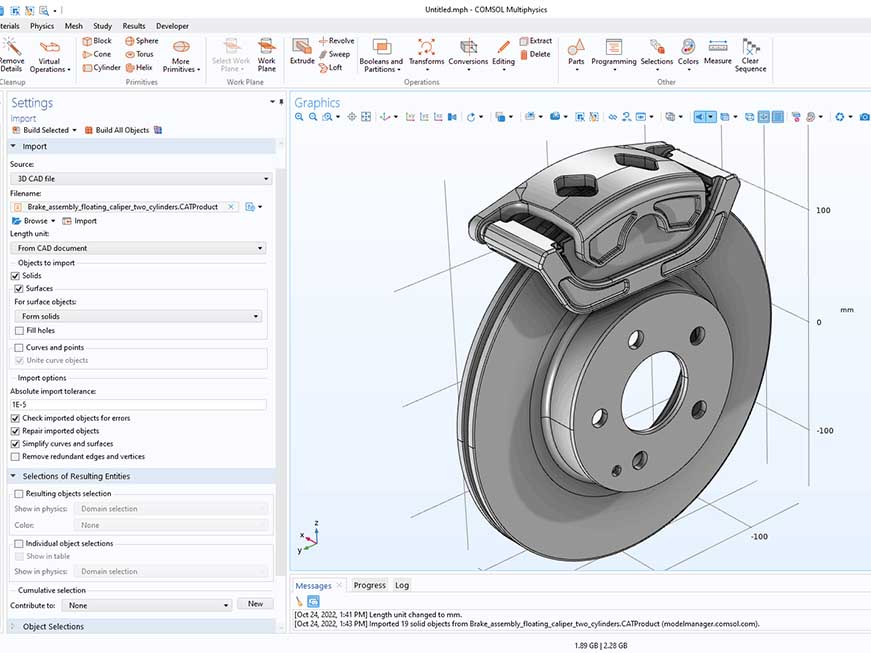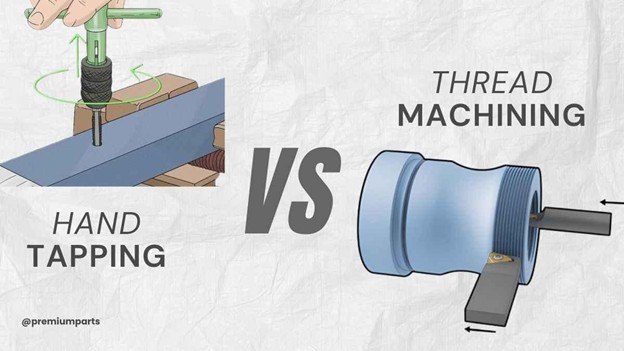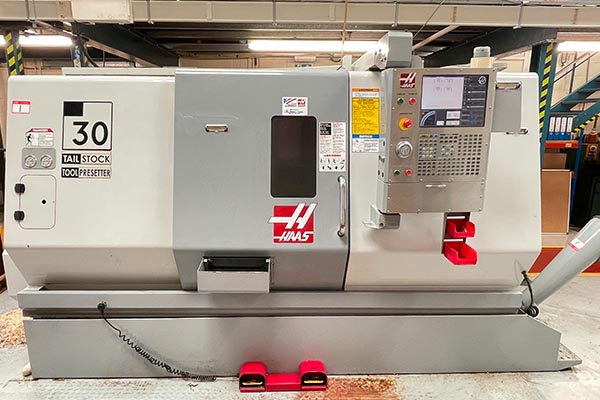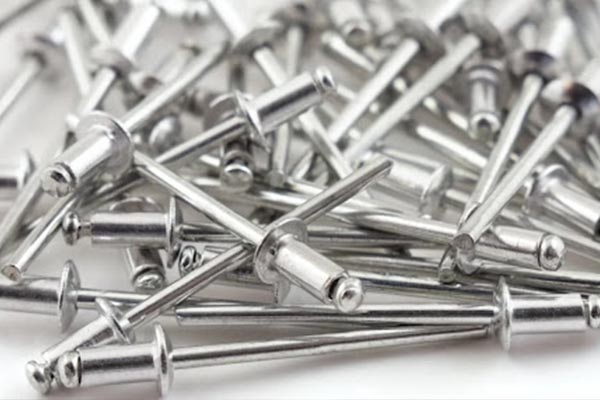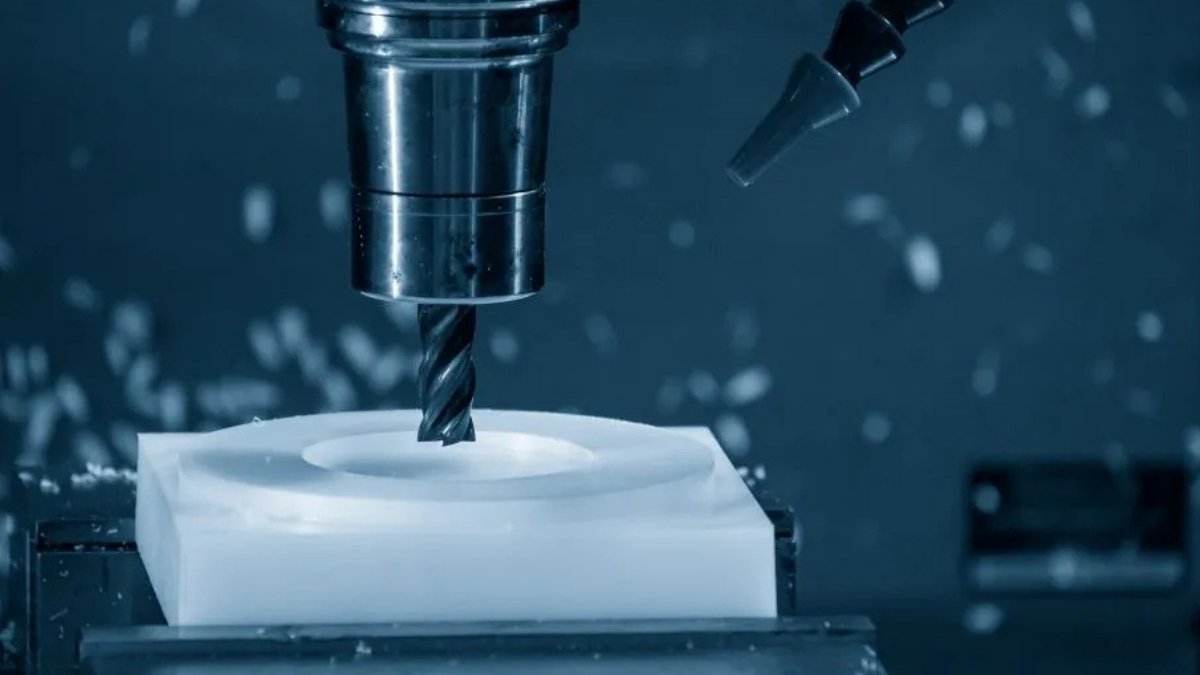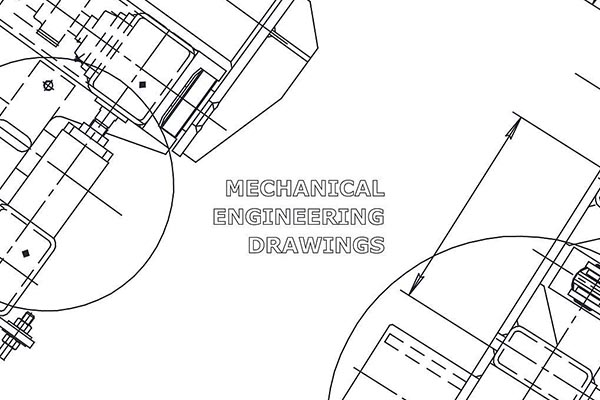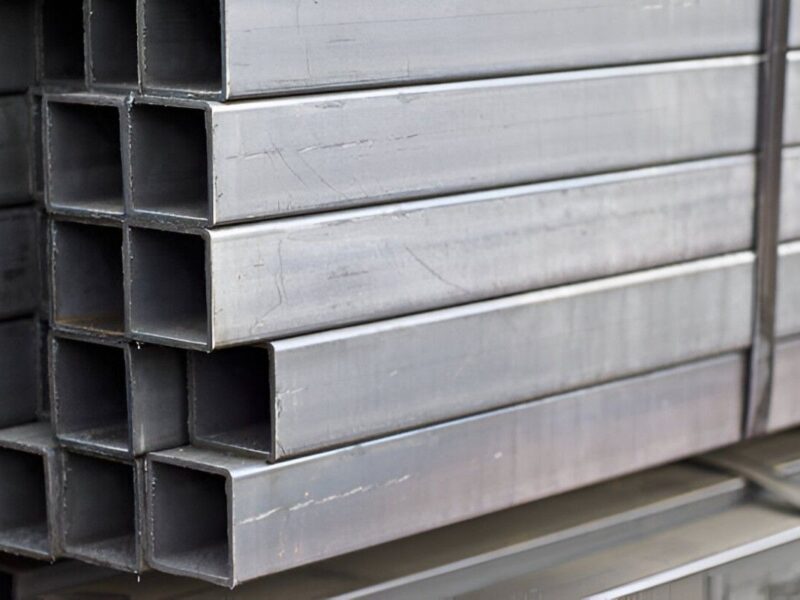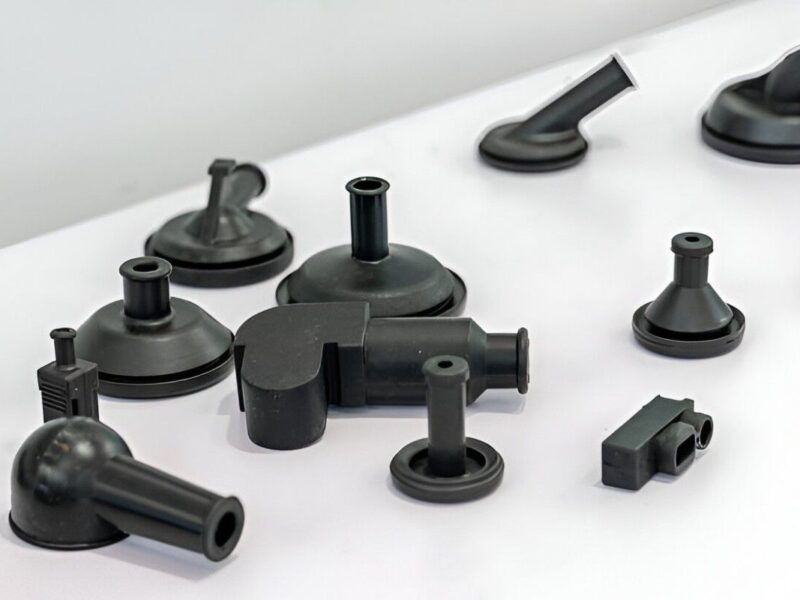Precision Machining demands high accuracy and a uniform surface finish. But have you thought about how manufacturers achieve complex shapes with high precision and tight tolerance? Standard cutting tools lack the capability of performing such complex tasks. Thanks to end milling.
End milling is a machining activity where a multi-flute cutter removes unwanted material from a workpiece. Unlike conventional tools, end mills cut in all directions, resulting in high precision. Machinists use them for contouring, slotting, and profiling for various applications. Selecting the right tool helps in getting optimal performance, increasing tool life, and reducing operation costs.
In this blog, we will discuss the normal operation of end milling, cutter types, benefits, and applications. We will also compare end mills with other tools and best practices to help your operations. Let’s get deeper into end milling and understand why it’s a cornerstone of advanced machining.
An Overview Of End Milling Technique
End milling operates as a basic machining operation that serves both CNC machining and mold-making, together with precision part manufacturing applications. End milling functions through a tool called an end mill, which rotates while cutting material through simultaneous multi-axis motion. Manufacturers use them for greater precision because they perform lateral and axial cutting in addition to axial cutting.
How End Milling Works
A solid shank end mill contains multiple cutting edges (flutes) that connect with the workpiece material while rotating. The endmill exposes two active cutting zones, which allow it to accurately machine slots and perform complex operations like pocketing and contouring.
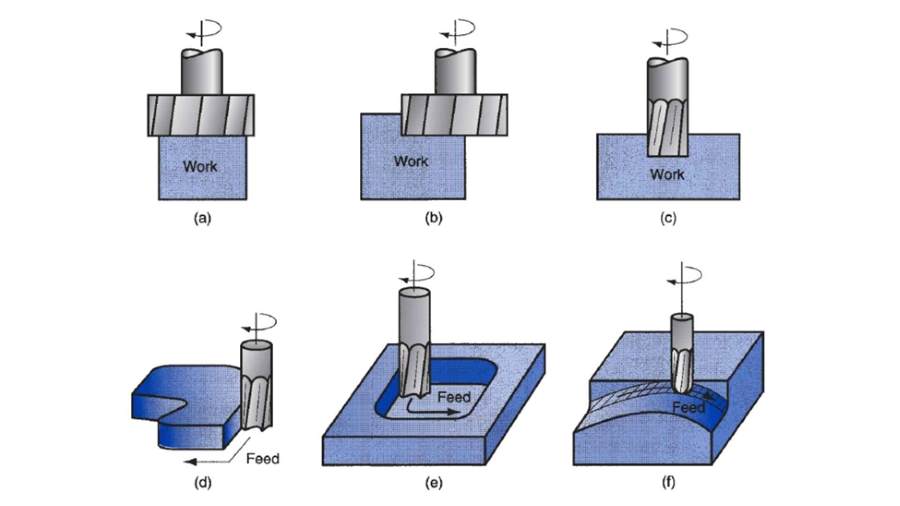
End Milling Operation
Image Description: Illustration of an end milling operation showing the cutter shape and cutting path in clear view.
These are the main elements that determine the success of end milling operations:
- The speed at which a tool engages the material surface is defined through Cutting Speed (SFM – Surface Feet per Minute). The speed range for stainless steel milling operates from 100-300 SFM, but aluminum allows faster speeds ranging between 500-1500 SFM.
- The speed at which a cutter travels through workpieces controls tool durability, chip shape formation, and workpiece precision through the IPM (Inches per Minute) setting.
- Each pass removes a specific amount of material from the workpiece through the Depth of the Cut parameter. When establishing the depth of cut controls tool deterioration while minimizing tool deflection in delicate workpiece materials.
- Carbide and HSS (High-Speed Steel) together with cobalt tools receive TiN (Titanium Nitride), TiAlN (Titanium Aluminum Nitride), and DLC (Diamond-Like Carbon) coatings for improved performance.
Comparison: End Milling vs. Other Machining Methods
| Feature | End Milling | Drilling | Turning |
| Cutting Direction | Axial & lateral | Axial only | Lateral only |
| Tool Type | Multi-flute end mill | Single-point drill | Lathe cutting tool |
| Surface Finish | Smooth, high-precision | Limited control | Requires additional finishing |
| Material Removal | High-efficiency profiling | Only for cylindrical holes | Ideal for symmetrical parts |
| Complexity | Handles intricate geometries | Limited to simple holes | Suitable for round components |
Types of End Mills
Choosing the correct end mill is essential for achieving both high precision and extended tool life. End mills exist with distinct purposes, which include roughing and finishing, along with slotting and contouring. The following section details the characteristics and applications of the most typical end mill types.
Square End Mills
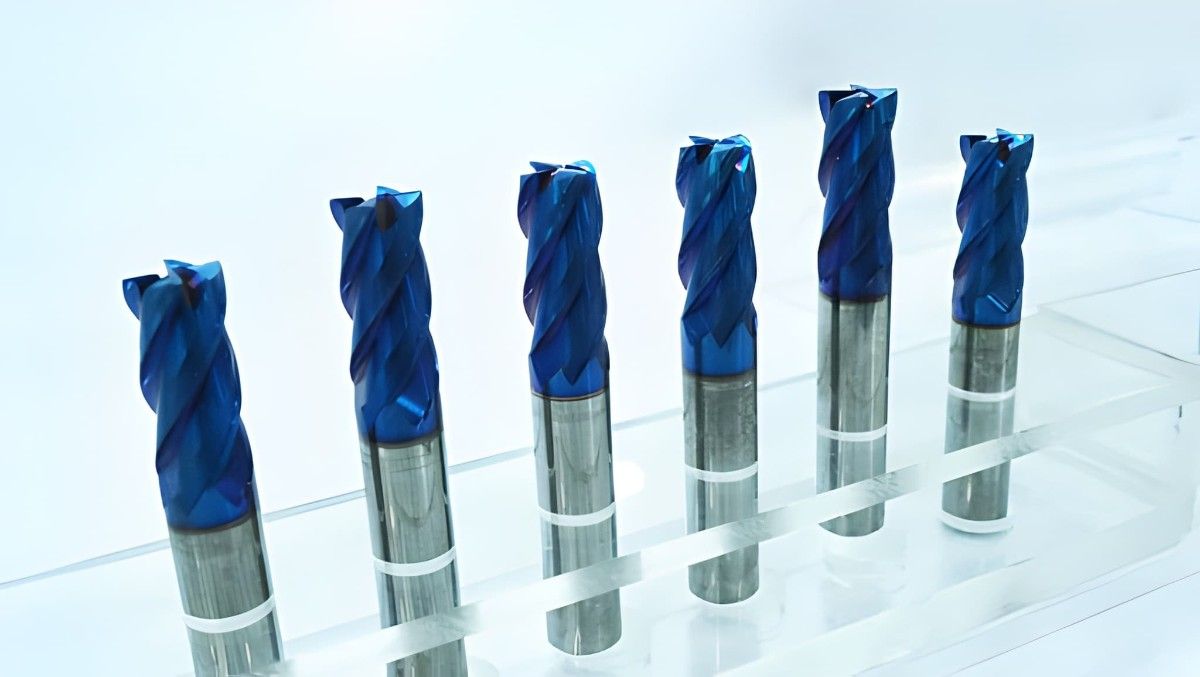
Square End Mill
Image Description: Close-up of a square end mill set showing sharp 90-degree cutting edges.
End mills with square ends serve as the most adaptable and frequently used cutting tools that manufacturers use during machining operations. These end mills feature 90-degree corners, which make them suitable for slotting purposes and contouring applications. End mills exist with 2 to 4 or more flutes, where increased flute numbers deliver better finishing quality yet reduce chip clearance.
The three available materials for square end mills include high-speed steel (HSS), cobalt, and solid carbide, with solid carbide standing out due to its excellent heat resistance and high hardness. Moreover, these end mills undergo manufacturing processes that achieve tolerances within ±0.001 inches.
Applications
- The flat surface requires face milling operations for finishing purposes.
- The toolmaking sector, together with automotive and aerospace operations, depends on this machine for general-purpose applications.
Ball Nose End Mills
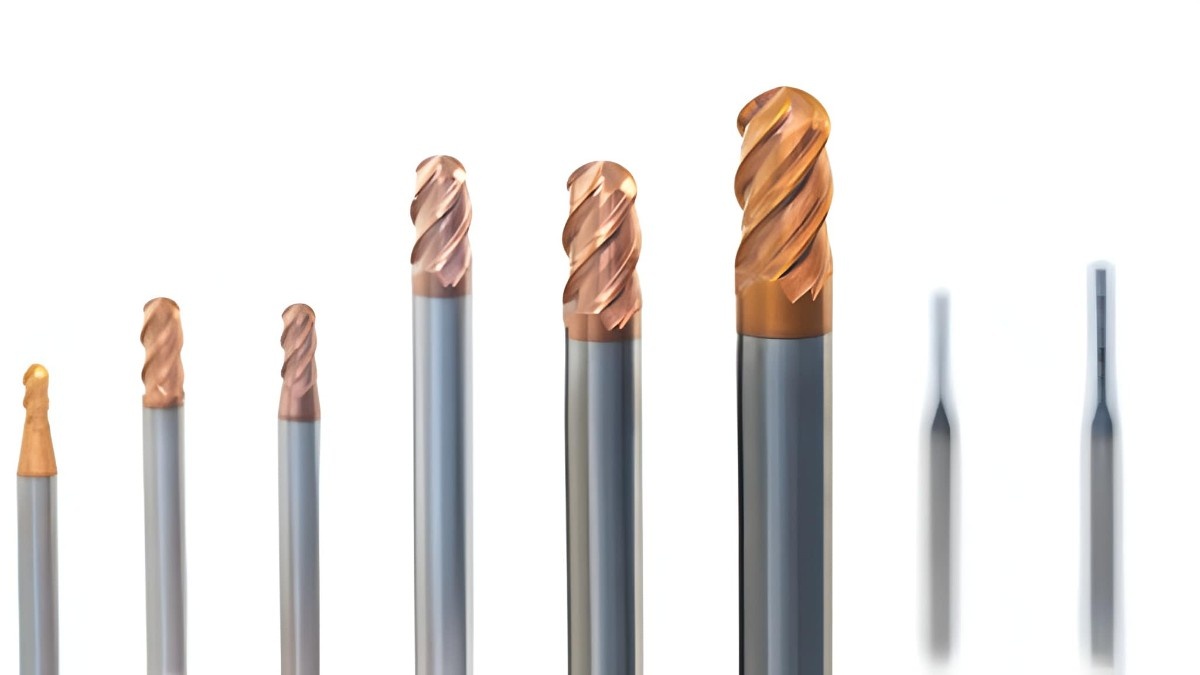
Ball Nose End Mill
Image Description: Close-up of a ball nose end mill showing the rounded cutting tip.
Ball nose end mills perform essential work on curved surfaces and 3D contours as well as complex geometries because their rounded cutting tip allows uniform tool engagement. Their specific design format enables even tool contact, which leads to decreased vibration while delivering refined surface finishes. The tool finds its primary applications in die and mold manufacturing as well as aerospace machining and medical implant production.
Carbide and cobalt materials compose ball nose end mills, which manufacturers produce with radius tolerances reaching ±0.0005 inches for precise machining operations. The helix angles between 30° to 45° maximize the removal of chips while minimizing tool flexion.
Applications
- The 3D contouring processes are used in the mold and die industries.
- The production of turbine blades, along with aerospace components, takes place through machining operations.
- Engraving and artistic CNC work.
Corner Radius End Mills
Corner Radius End Mill
Image Description: Close-up of an end mill with smooth rounded corners and polished cutting edges.
The combination of square end mill durability and ball nose end mill smoothness exists in corner radius end mills. Because of their rounded edges, corner radius end mills reduce stress points effectively when machining strong metals such as titanium and Inconel. Tool life duration increases through these tools because they prevent tool damage and improve their ability to resist wear.
These tools exist in carbide and cobalt materials and receive TiAlN or AlCrN (Aluminum Chromium Nitride) coatings, which boost their operational endurance during quick cutting operations. Standard corner radii measure between 0.5mm to 2mm, while their tolerances stay at ±0.0002 inches to maintain tight dimensional precision in aerospace manufacturing and medical device production.
Applications
- The high-speed machining process includes steel and titanium components and aerospace components.
- The tool maintains its integrity during material processing while minimizing the amount of material chipping away.
Roughing End Mills
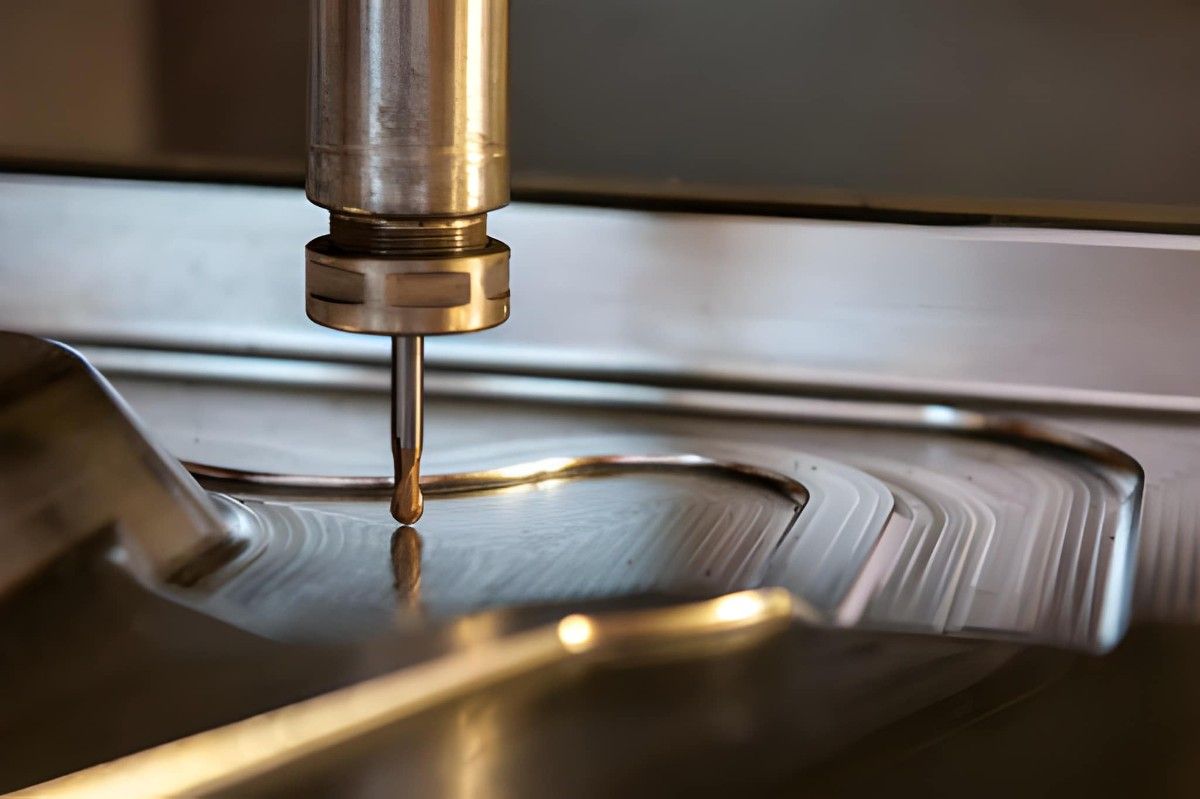
Roughing End Mill
Image Description: A roughing end mill showing serrated cutting flutes.
The aggressive material removal capability is the main function of roughing end mills, which professionals call hog mills. The serrated or wavy design of their cutting edges produces small chip fragments, which decreases cutting forces while allowing for faster feed rates. Roughing end mills serve as critical tools for machining applications that involve steel alongside cast iron and titanium materials.
Variable pitch geometry end mills exist to minimize both chatter and vibration during machining operations. Roughing end mills can handle a depth of cut (DOC) that extends to 1.5 times the tool diameter, which helps prepare workpieces before the final finishing process.
Applications
- The removal of substantial material volumes occurs during roughing operations.
- The process includes machining all types of cast iron together with steel and high-strength alloy materials.
- Structural part production in heavy machinery.
Finishing End Mills
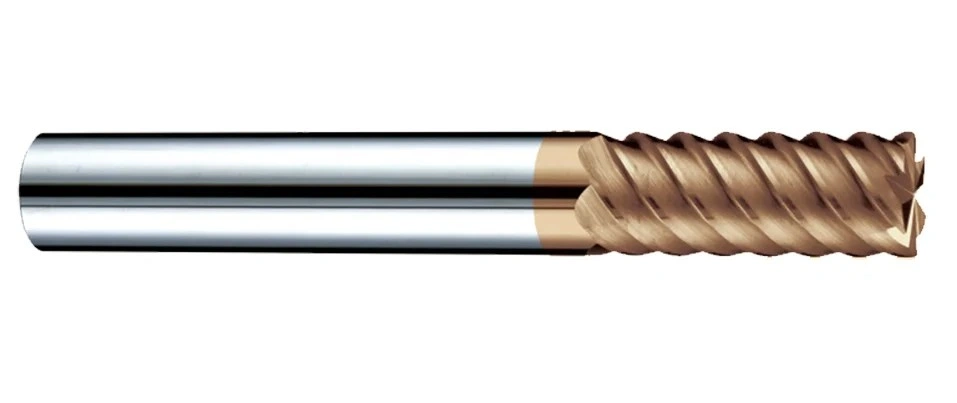
Finishing End Mill
Image Description: Close-up of a fine-edge end mill showing smooth flute geometry.
These tools deliver outstanding surface finish quality because they follow roughing operations. Moreover, they possess slim flutes that exceed five to eight in number, which minimize both chatter and deflection characteristics, thus making them necessary for precision components during final finishing operations.
The tools consist of micro-grain carbide materials with AlTiN and DLC coatings to protect against heat degradation and extend their operational life. The surface roughness reaches extremely low levels of ≤0.2µm Ra, which produces mirror-like finishes required for critical aerospace and medical components.
Applications
- The finishing process for precision parts occurs at the end of production.
- Medical device and mold manufacturing.
- Reducing secondary polishing steps.
Tapered End Mills
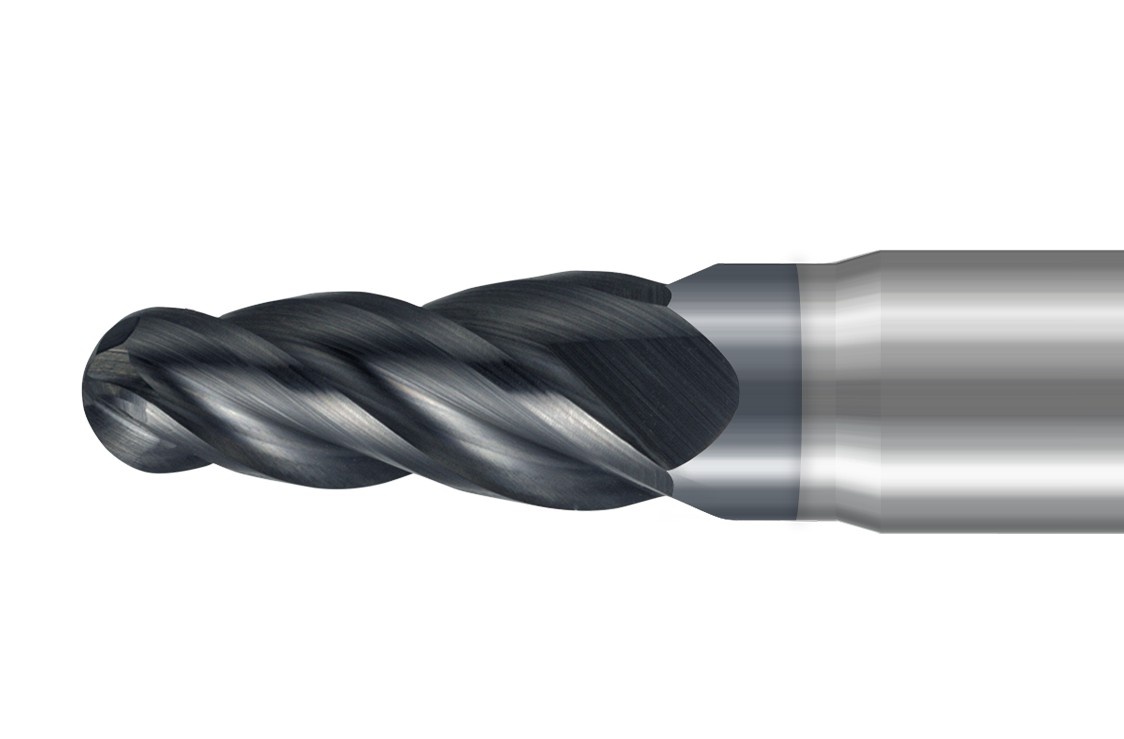
Tapered End Mill
Image Description: Close-up of a tapered end mill showing the conical cutting profile.
The tapered shape of tapered end mills enables deep cavity machining and engraving operations due to their conical cutting profile. The tools enhance durability and decrease tool flexion because these features are essential for producing aerospace turbine components and molds, and dies.
The cutting edges on tapered end mills receive TiAlN or TiCN (Titanium Carbonitride) coating to enhance their resistance against wear when working on hard materials while operating at taper angles from 3° to 30°. The extended length of the cutting edge enables better penetration depth, which reduces the number of required tool changes.
Applications
- Engraving and deep cavity milling.
- Turbine blade and mold machining.
- Intricate 3D profiling in aerospace components.
High-Helix End Mills
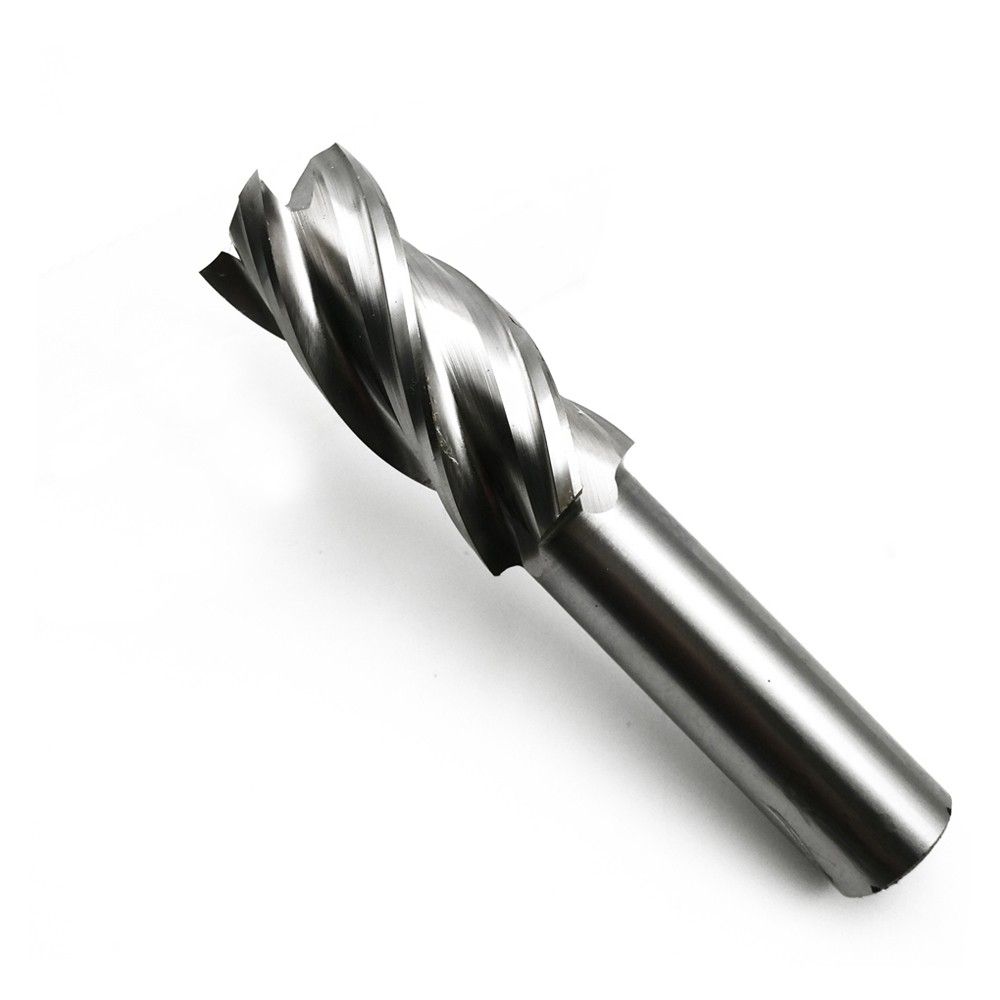
High-Helix End Mill
Image Description: Close-up of a high-helix end mill showing steep spiral flutes.
The steep flute angles between 40° and 60° on high-helix end mills create effective chip evacuation while reducing cutting forces during the machining process. In addition, these tools speed up machining processes while stopping built-up edge formation, which makes them suitable for cutting aluminum, brass, and soft materials.
The production of high-helix end mills typically starts with ultrafine carbide materials before they receive specific TiB2 coatings that optimize non-ferrous material machining. The sharp angle of the tool reduces wear, but the optimized edge design enhances machining performance.
Applications
- The machining process at high speeds operates on aluminum, together with brass and copper.
- Plastic and composite material cutting.
- Reduced cutting forces for improved tool life.
Single Flute End Mills
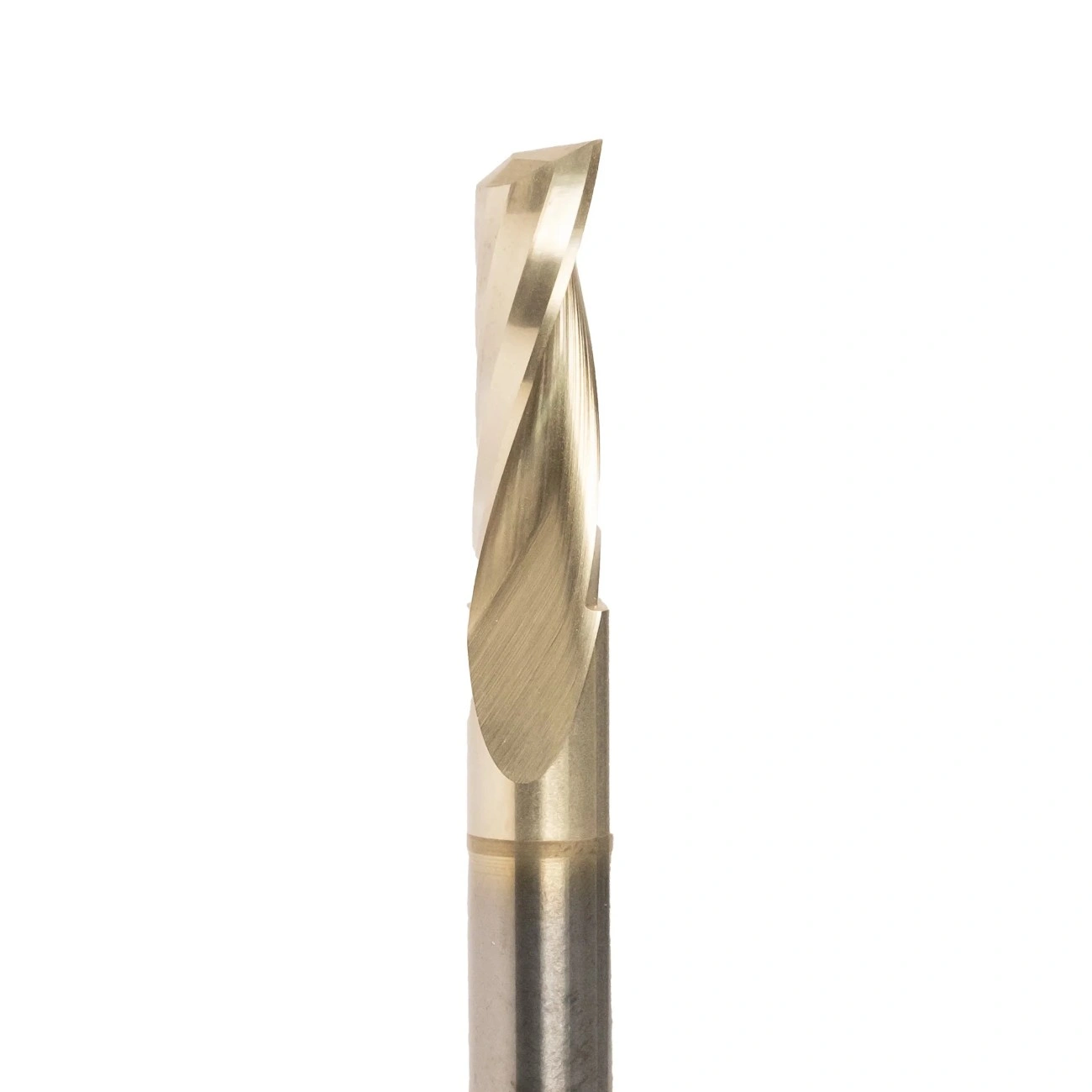
Single Flute End Mill
Image Description: Close-up of a single flute end mill showing wide chip clearance.
End mills equipped with a single flute design provide maximum chip clearance, so they become the standard tool for plastic, aluminum, and acrylic machining. Moreover, single-flute end mills enable both faster material movement and outstanding surface quality. This makes them ideal for creating precise optical parts, electronic casings, and soft material prototypes.
Single flute end mills employ solid carbide materials to produce tools featuring precise edge grinding that eliminates burrs. These tools run at maximum feed rates 50% higher than multi-flute tools, thus preventing melt damage to materials and chip welding.
Applications
- Acrylic and plastic cutting with smooth edges.
- The process of aluminum machining produces minimal chip clogging during the operation.
- CNC machines operate at high speeds to route soft materials.
Benefits of End Mills
The usage of end mills brings benefits that surpass traditional cutting tools. The tools deliver unmatched efficiency when used for high-precision work, fast material removal, and improved surface finishing requirements. Moreover, engineers prefer end mills during CNC machining operations based on these key benefits.
High Precision & Versatility
End mills offer tight tolerances that can maintain measurements to within ±0.001 inches for making precise cuts of critical components. Complex shapes and deep cavities alongside intricate profiles become possible through the utilization of specific end mills, such as ball nose and tapered versions.
Faster Material Removal
End mills operate with greater speed in material removal when compared to standard cutting tools, yet they preserve their operational efficiency. HSM operations use variable flute end mills to boost feed speeds and decrease cycle duration.
Superior Surface Finish
The finishing end milling process generates superior surface finishes, which eliminate the need for extra finishing operations. The selection between different coatings and helix angles helps prevent burrs and eliminates supplementary processing steps.
Extended Tool Life
The combination of TiAlN and DLC coatings on modern carbide end mills provides them with extended operational life because of their wear resistance properties. The combination of appropriate tool choices along with optimized cutting parameters leads to longer tool life and better machine productivity.
Challenges and Overcoming Them
Using end mills produces superior results, yet their improper usage causes equipment breakdowns while generating inferior manufacturing outcomes at elevated cost rates. The knowledge of these issues enables manufacturers to achieve better milling performance.
Tool Wear & Breakage
Tool breakage, combined with flank wear and chipping, occurs when high-speed cutting takes place. The combination of variable helix end mill design with wear-resistant coatings helps decrease wear and tool failure. The prevention of tool loading overload requires operators to modify feed rates, together with spindle speeds and depth of cut.
Poor Chip Evacuation
The accumulation of chips inside the cutting zone generates built-up edges (BUE) alongside heat damage. The evacuation of chips becomes more efficient through the use of high-helix or single-flute end mills when working with aluminum or plastic materials. Coolant application alongside compressed air use helps prevent tool overheating.
Vibration & Chatter Issues
Tool failure happens when chatter results in a poor surface finish. The reduction of vibrations becomes possible through shorter overhang lengths combined with balanced tool holders and different flute designs. Workpiece clamping systems that are used correctly produce both greater stability and higher accuracy.
Incorrect Cutting Parameters
When spindle speeds and feed rates are set improperly the resulting cuts become poor while tool wear becomes excessive. Manufacturer’s guidelines should be used as a starting point to modify parameters according to both material type and tool shape.
Factors to Consider When Choosing End Mills
End mills that match the application requirements lead to efficient machining operations and longer tool lifetimes, along with exact outcomes. Evaluate each important element before you select your end mill.
Workpiece Material Compatibility
A particular set of tools needs unique shapes and protective layers to work with various materials. The hardest steel work requires carbide end mills that have AlTiN coatings. Aluminum end mills should have high-helix single-flute designs with TiB2 coatings to avoid built-up edges during operation.
Flute Count & Helix Angle
A tool with two or three flutes performs better with soft materials because it evacuates chips well, yet a tool with four to eight flutes produces better finishes when working on hard metals. A helix angle between 40° and 60° enhances both chip flow and decreases cutting forces.
Coating Selection
Coatings enhance tool performance. TiN extends tool operational time throughout all general machining processes. TiAlN and AlTiN maintain their strength properties at high operating temperatures in quick-cutting processes. The non-ferrous metal adhesion is prevented by DLC coatings. Select the coating material according to the workpiece material and cutting conditions.
Tool Geometry & Cutting Length
Deep-pocketing operations require either long-reach or tapered-end mills. Variable flute tools should be chosen for high-speed machining to minimize tool vibrations. Rigidity and tool length must be adjusted properly to avoid deflection.
Feed Rate & Spindle Speed Optimization
The improper selection of feed rate results in reduced operational efficiency and broken tools. The recommended chip load per tooth (CLPT) values should guide you to find the best cutting speeds. The spindle speed needs adjustment according to the tool diameter to avoid overheating.
Conclusion
Advanced manufacturing operations heavily depend on end mills to achieve both efficiency and precision in their operations. Choosing the appropriate tool combined with proper parameters, along with coating, enables users to achieve longer tool life, enhanced performance capabilities, and better surface quality. Correct handling of vibration, along with tool wear and evacuation, demands proper attention. Addressing all such concerns will help you achieve proper speed, tool paths, and coatings to get cost-effective milling results.
If you’re looking for precision-engineered end mills for your operations, Premium Parts has got you covered. Our expert team and advanced technologies provide custom CNC operating solutions, helping manufacturers maximize their operations. Visit PremiumParts.com today to take your manufacturing process to the next level.
FAQs
Q1: Why is end milling a preferred method of cutting over other cutting tools?
End mills have higher precision, versatility, and superior surface finish, which makes them ideal for complex machining operations.
Q2: What end mill do I select for my material?
Think of flute count, coating, helix angle, and material compatibility. Carbide tools with AlTiN coatings are used for harder materials.
Q3: Why do end mills wear out so quickly?
High cutting speeds, poor chip evacuation, and bad feed rates cause excessive wear. The tool geometry and cooling methods are used correctly.
Q4: What can I do to minimize chatter when using an end mill?
Vibration can be eliminated by using variable flute end mills, rigid tool holders, and clamping.


